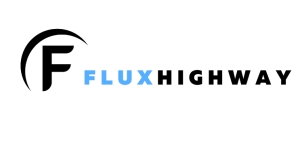Web 2.0 technology also placed data control in the hands of a few giant tech companies and this has some big drawbacks for business owners. Web 3.0, the next generation of the internet, with its combination of artificial intelligence, machine learning, and the semantic web offers some powerful solutions. In this article, learn how it will be very beneficial for businesses of all sizes – especially entrepreneurs starting up as services can be personalized quickly and cost effectively. Flux, dedicated to building out the cloud infrastructure of Web 3.0, is also keeping it a true decentralized platform.

Since its creation in 1989 by Tim Berners-Lee, the World Wide Web has continued to evolve. It has grown from a bunch of “read-only” static pages (Web 1.0) into a social and interactive hub that keeps millions connected (Web 2.0). This transition was championed by multi-billion dollar companies like Facebook (now Meta) and Google.
The result?
A global digital revolution became the building framework for many modern businesses.
Although web 2.0 was a huge success with an impact that can be seen on today’s Internet, it came with its drawbacks. The first was a ‘Gatekeeping” problem.
While the HTTP protocol that powered web 2.0 allowed for the possibility of building a free web, in reality, it was “stateless.” This meant the connection between the browser and the data servers terminated immediately after the transaction was over. The HTTP protocol only defined how data was delivered and not necessarily how it should be stored.
To bridge this gap, companies like Google provided an additional second layer that allowed connection to be retained while also taking responsibility for data storage.
Even though this approach was innovative and solved a pressing need, it also placed data control in the hands of a few “Giants.” These companies could easily determine the rise or fall of other businesses built on their platforms through sanctions and censorship.
In addition, users were encouraged to share their data (Likes, personal information, Birthdays, e.t.c) in return for ‘free’ use of these global platforms.
However, the data generated by millions of users became the backbone for a $766 billion advertising industry that offered no direct benefit to the consumer.
Also, the centralization of data banks and servers made data security tricky. A single hacked server could compromise untold amounts of data.
These limitations, coupled with the increasing miniaturization of hardware devices and computational power, unveiled the need for a new era, Web 3.0.
What is Web 3.0?
Web 3.0 simply refers to the third successive generation of internet services. It redefines the Internet as an intelligent entity capable of learning.
Rather than rely on the approach used by past iterations, Web 3.0 leverages a unique combination of Artificial intelligence, Machine learning, and the Semantic web to offer personalized internet service. There are four core features of web 3.0 that makes this possible:
- Interoperability: Running on the decentralized network web 3.0 provides, cross-platform applications become easier. Data from individuals can be aggregated across different devices, providing a solid framework for the Internet of things (IoT). This feature is also referred to as the Web 3 Ubiquity.
- Individualization: In web 3.0, information is interpreted from a personal perspective. For example, search engine results will vary depending on the data available concerning the user.
- Semantic Efficiency: In the third generation of the web, information is tailored to users’ unique needs; it is also interpreted according to the user’s context. An example of this can be seen in executing a search on WolframAlpha compared to the conventional Google search. Web 3.0 replaces the glorification of ‘keywords’ with information more suited to the search query context.
- Data Privacy and ownership: On web 2.0, users could be tracked across different sites and data’ snapshots’ taken. The information (which can include; restaurants you’re checking out online, e-commerce goods you’re interested in, e.t.c) is then used by advertising companies to create targeted ads.
In contrast, Web 3.0 restores data ownership and privacy back to the consumer, allowing users to decide which information to share with what platform. Now, users can also benefit from the ads. For example, Web 3.0 Browser, Brave, compensates users for ads they watch using BAT tokens.
To build a truly trustless and permissionless platform, Web 3.0 runs on blockchain technology that allows it to bypass the centralization of Web 2.0 effectively.
How will Web 3.0 change the methods of doing business?
A decentralized Web3 will bring major changes to some crucial sectors of running a modern business, the first being data storage.
Businesses’ centralized data storage system will give way to a decentralized cloud-based infrastructure. While AWS, Microsoft Azure, and Google Cloud already offer cloud hosting on web2 platforms, these companies ‘own’ the data servers. As such, they control over 70% of all businesses running on the cloud.
The emergence of decentralized Web 3.0 will remove web services’ monopolization and give room for other competitive startups. As a result, cloud infrastructure costs will reduce and give businesses more leeway.
Another key area in which Web3 will shape business is social media and user-generated content to provide personal perspectives to data. This will allow businesses to provide unique solutions tailored to the appropriate contexts. Social media in web 3.0 will evolve from “corporation-owned” businesses to “community-owned” social institutions.
As Web 3.0 will run on a decentralized protocol, we will also see a strong, seamless, and automated integration between the network, blockchain, and cryptocurrency. The emergence of Decentralized Autonomous Organizations (DAO) will replace the hegemony and control of traditional business giants, giving users the freedom to decide what to do with their data.
So how does Flux come into play?
Flux provides the essential cloud infrastructure to power the new decentralized web. Its architecture provides the second-layer operating system that allows Web3 applications to run seamlessly on the computational platform.
With users’ data safely secured on thousands of nodes worldwide, it’s goodbye to fears of a monopolistic data breach. The nodes are redundant, which means another immediately takes over in the case of the failure of one node.
Flux maintains the Web3 standards of interoperability and ‘value to users’. Participants can contribute by running nodes or mining to earn rewards in the native Flux tokens. The control of data stays within the community, with Flux’s XDAO providing every member with the power to vote on proposals.
Businesses also have access to scalable and enterprise-grade hardware for optimum performance of their applications. Flux suite of decentralized computing services thus provides the ideal environment to build fast decentralized business systems with minimal fees.
Although the material contained in this website was prepared based on information from public and private sources that Fluxhighway.com believes to be reliable, no representation, warranty or undertaking, stated or implied, is given as to the accuracy of the information contained herein, and Fluxhighway.com expressly disclaims any liability for the accuracy and completeness of the information contained in this website.
Via this site: https://fluxofficial.medium.com/flux-business-in-a-decentralized-web-3-0-world-901c010b1a1f

